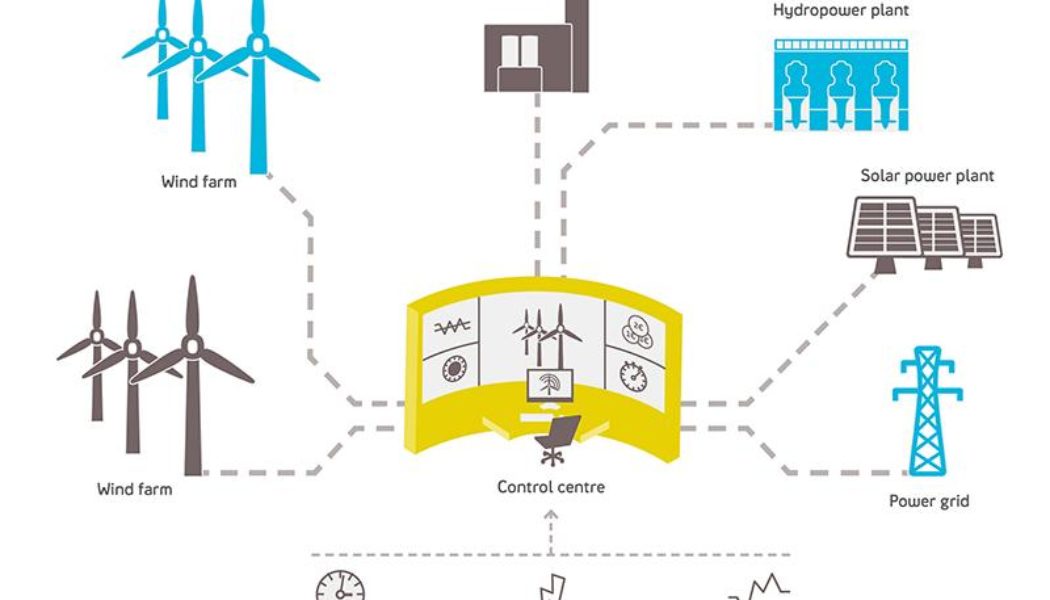Digital solutions are delivering environmental benefits across the power and utility sector in different ways, whether by improving asset efficiency, increasing overall business value, or strengthening ESG reporting says David Thomason, Industry Principal – Power Generation at AVEVA.
The power sector is increasingly under pressure to find newer, cleaner ways of producing, storing, and distributing power as environmental, social and governance (ESG) regulations begin to take effect. In recognition of this fundamental imperative, utility leaders are already adjusting their business models to maintain their social license to operate while simultaneously protecting their financial outcomes.
As in other industries, digital tools offer the opportunity to reconcile these ambitions and deliver the sustainability dividend the sector so desperately needs. By 2024, it is expected that 80% of utilities across the sector’s sub-industries will have embedded sustainable business models by way of digital transformation and a rearchitecting of the core business, according to IDC forecasts.
Digital transformation delivers benefits for all kinds of organizations, from reduced costs and greater productivity to improvements in safety, reliability, and efficiency. For the power sector, in particular, digital technologies can strengthen the reliability and efficiency of power grids and unlock new value opportunities – underpinning sustainability across the utility.
Let’s take a look at how two companies are using digital transformation to green their operations.
From reactive to predictive maintenance of improved asset efficiency
Governments and utility companies are onboarding strategies to decarbonize their grids on the road to net-zero carbon emissions. While new investments in renewable capacity can help improve the sector’s overall environmental credentials, it is equally necessary to maximize value from existing assets. Moving from power plant maintenance to asset efficiency optimization is one way to do so.
Ontario Power Generation (OPG) is one of the largest low-cost clean power producers in North America. As with its peers, supply continuity is essential to its operations. For example, it must contend with dispatchability, where electricity is generated on demand to satisfy consumption needs.
To improve efficiency across its operations in line with its goal of becoming a net-zero carbon company by 2040, OPG leveraged the power of data for decision-making to shift from reactive to predictive operating models. The company installed the PI System and AVEVA™ Predictive Analytics across its renewable and nuclear fleet, thereby enabling artificial intelligence-infused condition-based maintenance.
Data from thousands of sensors throughout OPG’s power plants was used to establish over 1,200 predictive and prescriptive maintenance operating models. Risk was reduced and operational efficiency increased throughout the fleet, resulting in 3,000 fewer annual maintenance hours and up to $4 million in efficiency savings within the first 24 months of implementation. One single nuclear predictive analytics catch saved $400,000. Moreover, OPG’s teams have been able to share best practices more quickly over the cloud.
Certified sustainability data to strengthen ESG reporting
Digital tools offer end-to-end traceability, satisfying ESG compliance requirements and even revealing new income streams. More data is now collected from remote assets and industrial-internet-of-things devices in a decentralized operating environment, but it is of limited use without insightful and analytical tools. When this data is streamed to a cloud-based data management platform, relevant stakeholders can quickly and securely visualize it in context, thanks to the use of predictive analytics and even AI tools. One impact is that suppliers can deliver services based on real-time conditions, streamlining operating costs. Similarly, customers can access this data to verify they are being supplied from low-carbon energy sources.
Dominion Energy aims to realize net-zero carbon and methane emissions from its power generation and natural gas operations by 2050, as well as achieving net-zero for emissions outside its direct operations. Digital tools are already helping the American power and energy company attain these goals.
By integrating data gathering and sharing into its activities, Dominion has enjoyed a 50% increase in speed to market for vital environmental data. This energy supply visibility enables Dominion’s customers to prove their ESG compliance to investors and auditors. And for Dominion itself, the certified data stream has opened up new revenue sources among customers that favor environmental sustainability.
Successful digital transformation can improve business performance
The experience of early movers such as OPG and Dominion shows what utilities can expect from digital transformation. In fact, by 2025, IDC expects that over 50% of utilities will increase spend in automating operations with an emphasis on edge, AI and machine learning technologies, thus doubling the penetration of predictive and prescriptive maintenance.
As in other sectors, utilities that embed digital solutions at the core of their organizations will reap the greatest benefits, whether these are in terms of streamlined operations, superior value or sustainable efficiency. Successful transformations could very well deliver the next S-curve of business performance, while also improving environmental outcomes.
To learn how AVEVA transforms the Power sector, click here.
By Staff Writer.











Tagged: AI tools, AVEVA, Carbon Emissions, Cloud-based data, digital solutions, Digital Technologies, Digital Tools, Digital Transformation, Environmental data, ESG Regulations, Industrial Internet of Things, IT, IT News, Power Plants, Tech, tech news, technology, The power sector